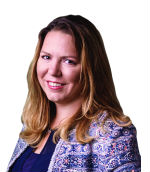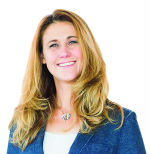Tytho: Time is money and tax automation saves on both - Eliza Alberts-Muller and Monica Erasmus
Eliza Alberts-Muller (near right) and Monica Erasmus, indirect tax and transfer pricing partners, respectively, at Tytho - a global team of IT, supply chain and tax experts who streamline and automate processes - speak about the evolution of technology, the impact it has on tax and what expectations they have for the future.
As tax experts, how do you view technology?
Eliza Alberts-Muller: First, it may be good to set the scene. Our current evolution is that of a digital nature, regardless of whether you wish to be part of it or not. However, the pace of the technological evolution is somewhat faster than we will have predicted. Did you know, in 1991, there was only one website and, in 2014, that number surpassed one billion - that is simply unfathomable. We as tax professionals, therefore, need to act now and embrace the new technologies that are digitising our society, and forcing legislators and governments to step up their game.
Monica Erasmus: I agree. I think that the focus is on whether a tax department can reach a workable level of technological maturity. Innovation leads to solutions but deciding which is right is another matter as there are no silver bullets. Personally, I had more than 80 meetings this year alone to discuss our transfer pricing documentation management tool, of which only a few companies enquired about the back-end technology.
Was this surprising? No, but it shows that there is a disconnect between technological know-how and how they translate into the tax world through tax tooling. In essence, automation only enables processes, enriches calculation capabilities and enhances data mining. Our goal is to minimise the one-tool-one-trick approach that focuses only on 'how can I make my transfer pricing report?' - and broaden it to include how to simplify and harmonise the transfer pricing documentation process; divide the accountabilities in this process; and find the baseline process, master data and management reporting needs that fort the organisation, and with which other software, should any transfer pricing tooling interact.
Could you elaborate on how technology is impacting indirect tax, as well as transfer pricing?
EAM: Well, the invention of the ERP system(s) in the early 90s has allowed us to integrate the various business functions into one platform, the demand for which came from the increased scale and scope of MNEs. This single platform is an offering that, combined with the globalisation and centralisation of supply chains, makes indirect tax determination and compliance more intricate - a prime example of how technology increases the need for advanced VAT and tax automation solutions.
Countries are shifting towards more state-of-the-art processes due to technological considerations; for example, big data is leading to more-sophisticated reporting and auditing systems. The demand for transparency - driven by technology - and the fight against tax fraud has also led to change, with the implementation of standard audit file for tax (SAF-T) in an increasing number of countries - a step towards government's having direct access to your transactional data. Brazil already does this and many others are considering it.
ME: In the past 12 to 15 months, most large companies have focused on how to identify, retrieve and report data for country-by-country-reporting (CbCR) purposes. In the past six months, companies are initiating more in-depth discussions around the automation of transfer pricing documentation. In terms of off-the-shelf transfer pricing software solutions, the technological functionality is quite fragmented and bespoke, but there is a lot of investment and development going as we speak to address this tax-technology vacuum.
What has surprised me is the shift in openness of tax departments to new technologies, like cloud computing and open-source, and software as a service - SaaS, which is extremely scalable and nurtures self-service computing. SaaS could relieve the in-house IT department of a large number of mundane IT activities, like periodic compatibility updates and configuration, while enhancing the capabilities of tax professionals through 24/7 accessibility from their mobile devices.
How will these changes impact the function of tax professionals?
ME: We are, as a function, overstretched, understaffed and underfunded. Companies are just starting to ask the right questions that delve into automation for transfer pricing purposes. Few tax departments have established an overall tax technology portfolio, roadmap or dedicated tax technology role within their organisation.
I sincerely believe that in automation, the true winners should be the people. I realise, that statement contradicts the objective of replacing manual data input and complex analytical work with machines. However, I believe automation almost always ultimately leads to a reallocation of work rather than a mere reduction of numbers. We can manage more work, requiring a more complex review, with the same number of people.
EAM: We can expect an increase in the demand, from tax departments, for more efficient data processing and management tools. In the past, we were the adviser; we used our own knowledge to ask the questions, while now we facilitate a system that automatically makes the same enquires. Frankly, I think it's fair to say that we cannot predict how things will look in ten years' time because we are at the tip of the iceberg in tax automation.
What should businesses be thinking about with regard to tax technology?
ME: First of all, you need to consider the simplest form of automation; namely, 'what is the baseline process and reporting I want to establish?'. A lot of time is taken by tasks that do not add value in terms of the content analysis. We believe that these should be off the desks of the specialists to unburden them, allowing them to free up time to tackle the more complicated issues.
Everything we do in tax includes document management and workflow. Currently, document management of companies relies on shared drives, email and portals, which become an inefficient labyrinth of data and reports. Workflows, as well as document management, are killing efficiencies. If we look at transfer pricing documentation technology, almost all tools focus on building a document modular, and have some kind of workflow management and repository. However, the logic of how modules are connected to actual transfer pricing files and how all the different parts connect are very different. Furthermore, we see a lot of complex tools; the user interface is essential and if you cannot find what you need easily then you should consider another tool.
EAM: It's time to invest in technology; the iron thumb has been lifted and tax authorities are not only supporting change, but also driving it - it's no longer an option not to. So, on that note, I would suggest businesses think first and foremost about the keys questions: are you in control of your tax-relevant data in your ERP system(s)? Does my reporting and filing data match my ERP transactional and master data? The answers to these questions validate if you are comparing apples to apples or apples to oranges. Additionally, we find that tax departments are constantly asking how they can take advantage of current enterprise technology. What we see is that businesses are welcoming an integrated approach and are interested in finding the root cause (rather than applying a patch); laying down their argument for a tax technology solutions' budget allowance that ensures the data sets match, so that they don't need to.
Where would you advice MNEs start?
ME: It is unfortunately unavoidable that they start by becoming interested in understanding broadly the back-end capability of the tax tooling they look at - how well it would interface with other software or how agile customisation to future needs would be.
Technology requires some form of budget and, if you want funds, you need a plan that articulates what your priorities are, and how you will integrate that plan within your current system. So, we advise tax departments to start building that plan, with the key stakeholders in finance and IT. Build your technological portfolio or roadmap across the taxes; CbCR can bolt on quite nicely with tax provision and reporting tooling or data extraction for other tax reporting purposes.
EAM: I would like to add, while it is important to think about the future of tax technology, we have to work in the here and now, and right now we need to focus on how technological c hanges are impacting legislation and creating challenges for new and existing businesses. You have to adapt to your environment; therefore, we advise you to think about the following:
- The world is changing and tax is not exempt.
- Find out if you know and are comfortable with your current situation.
- Create a taskforce to highlight the root causes of your issues and wishes.
- Allocate a budget; change doesn't come for free.
- Remember, this is a never-ending process, review the above annually.
ME: Finally, don't wait, start the discussion now.


